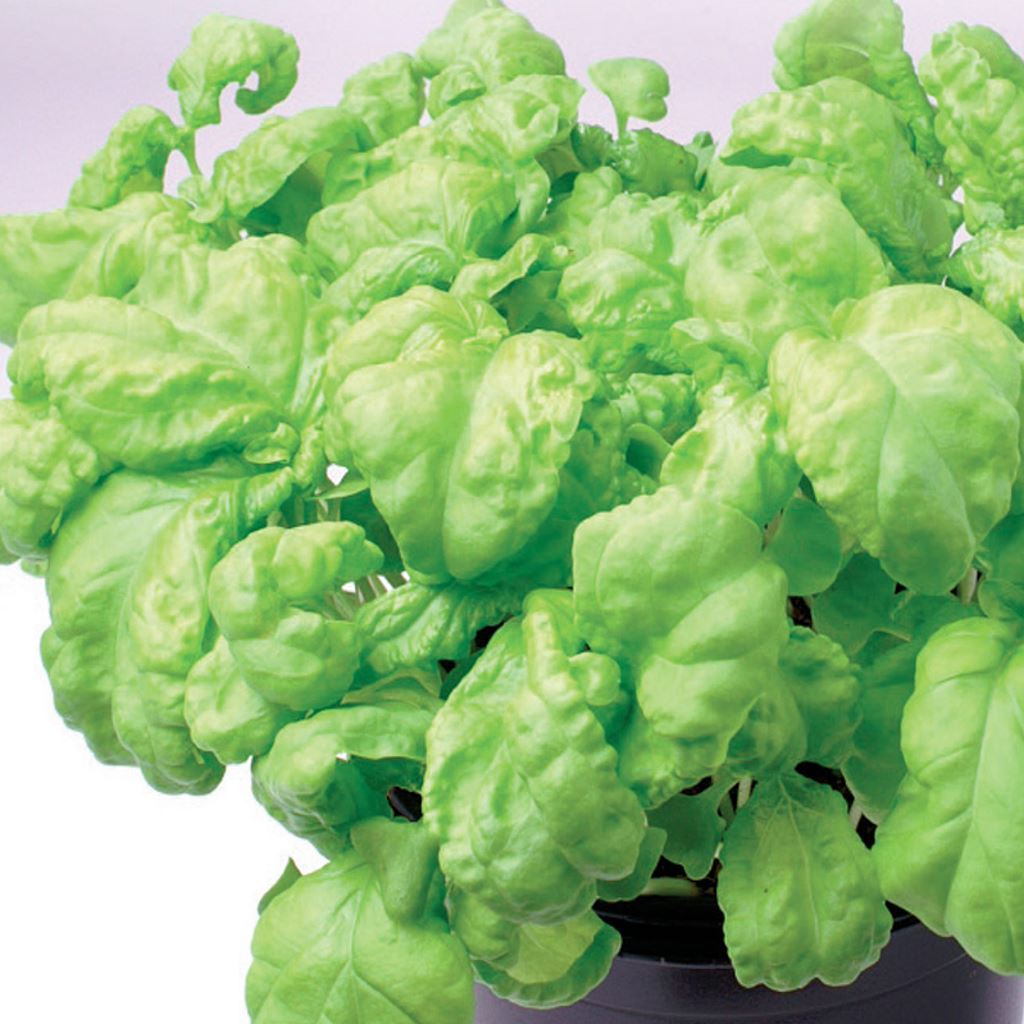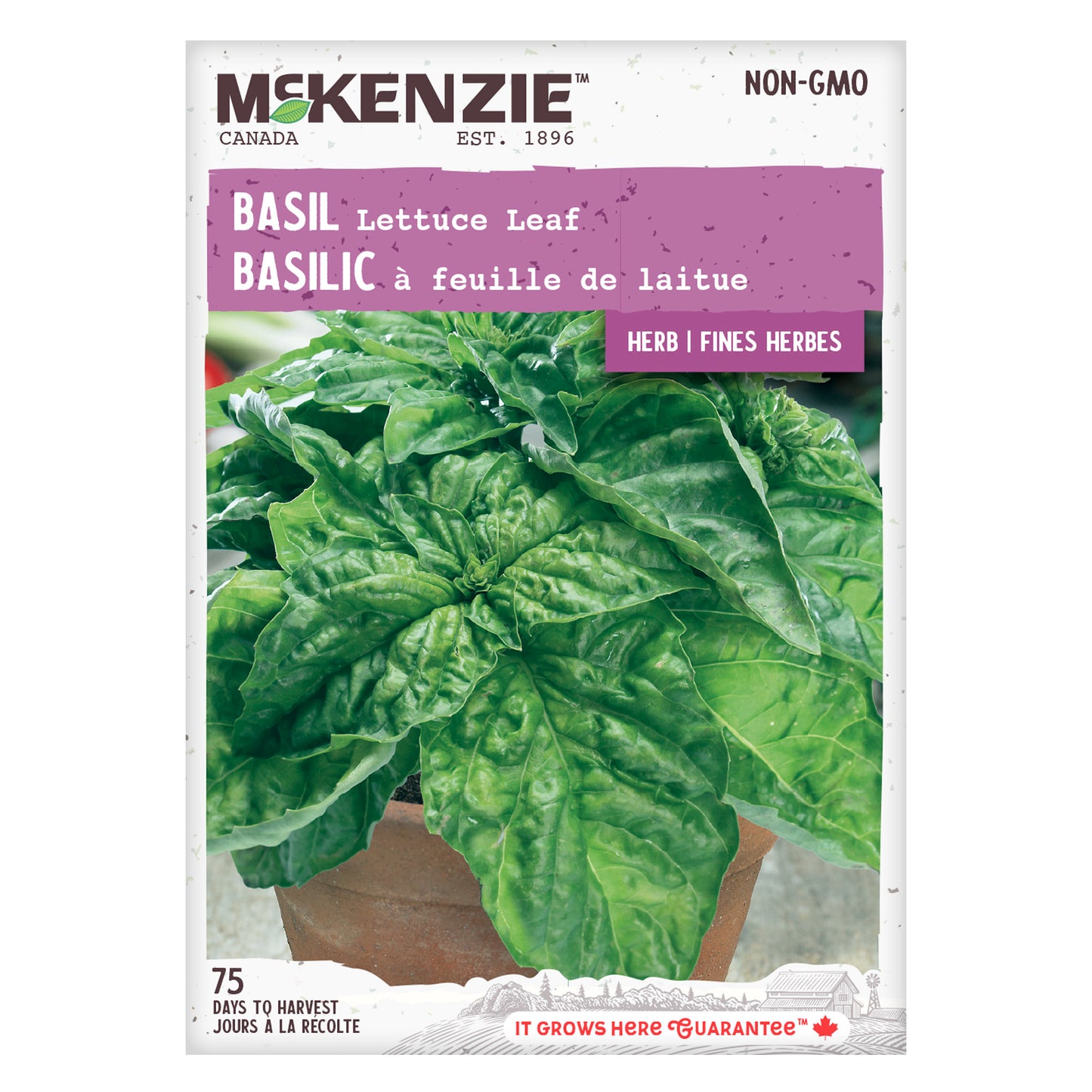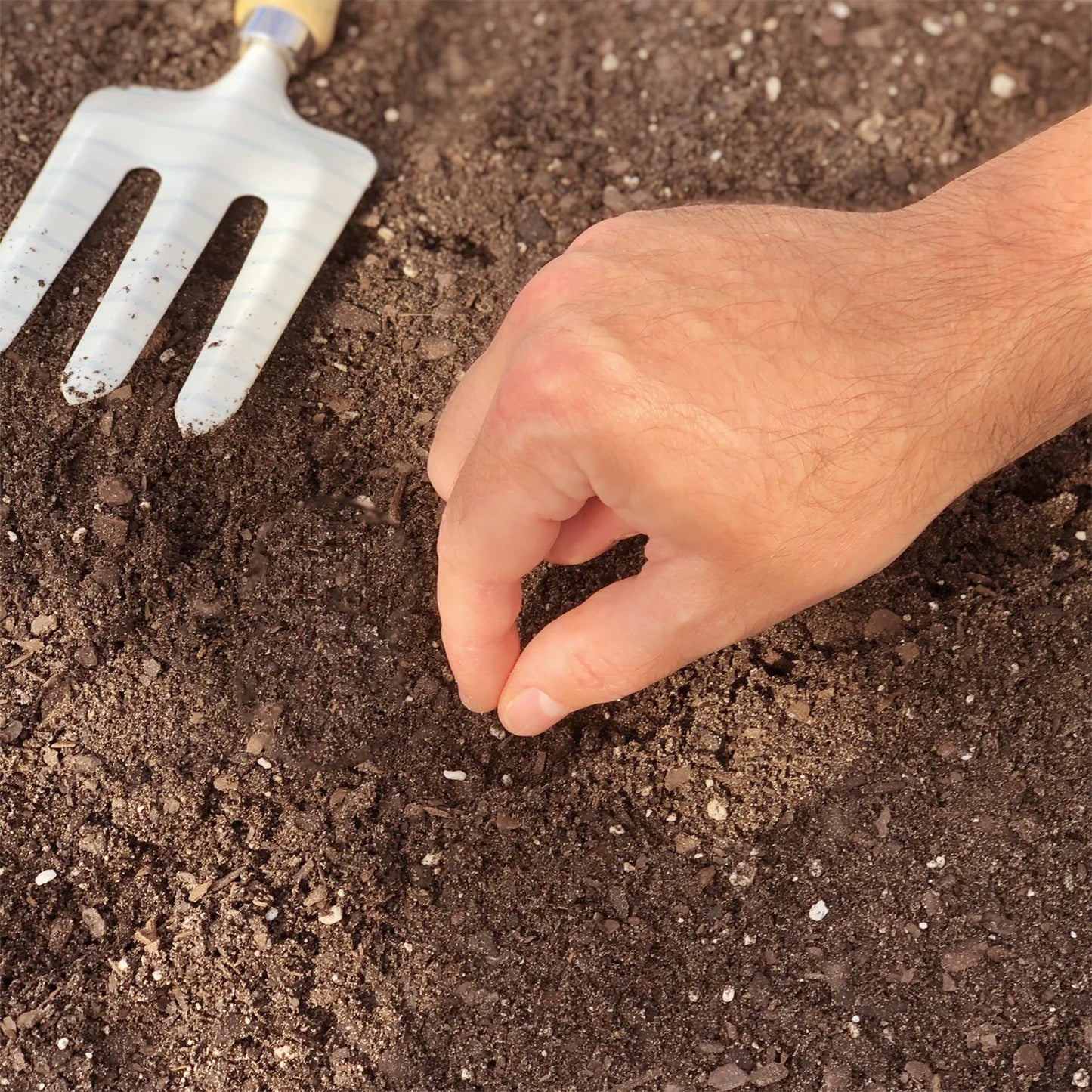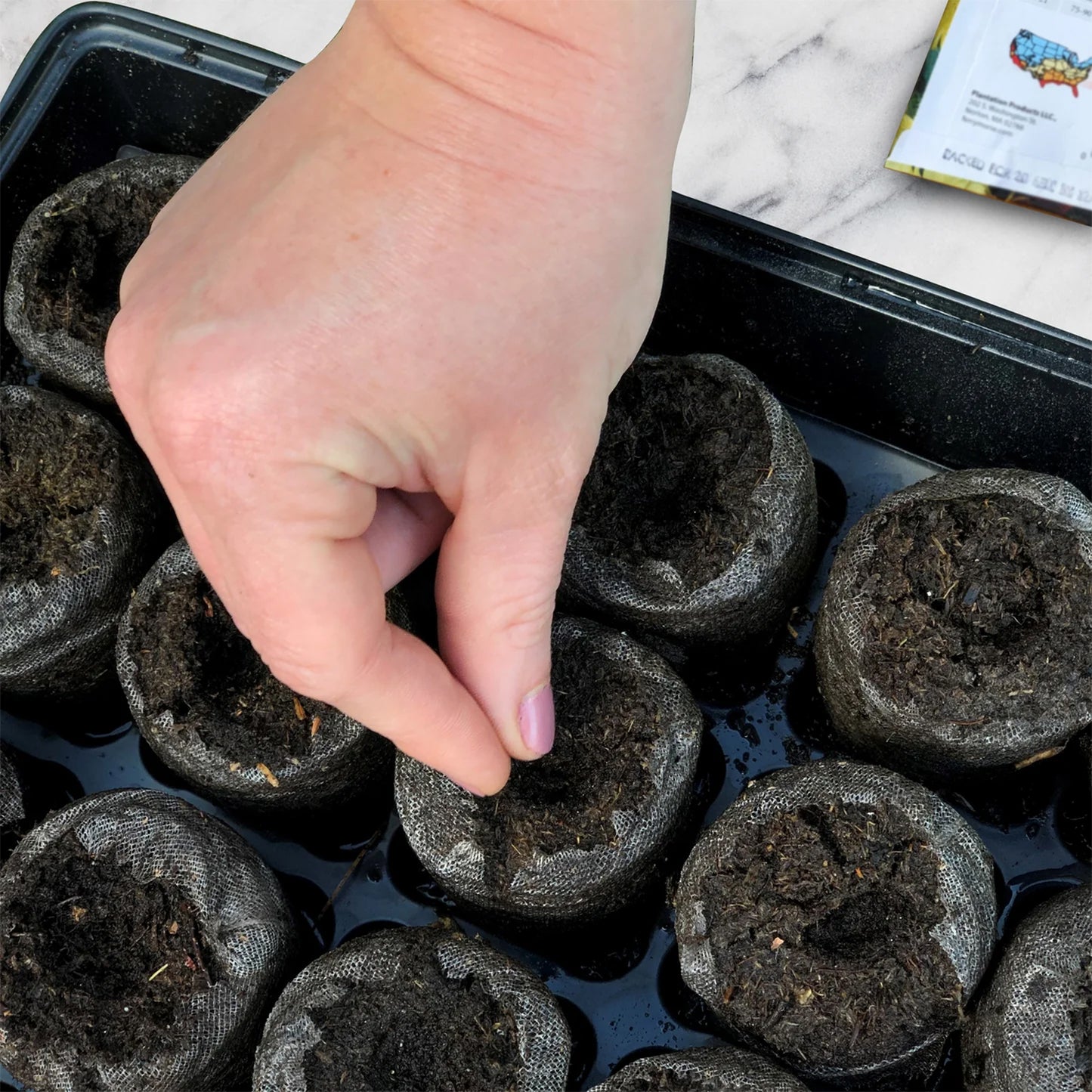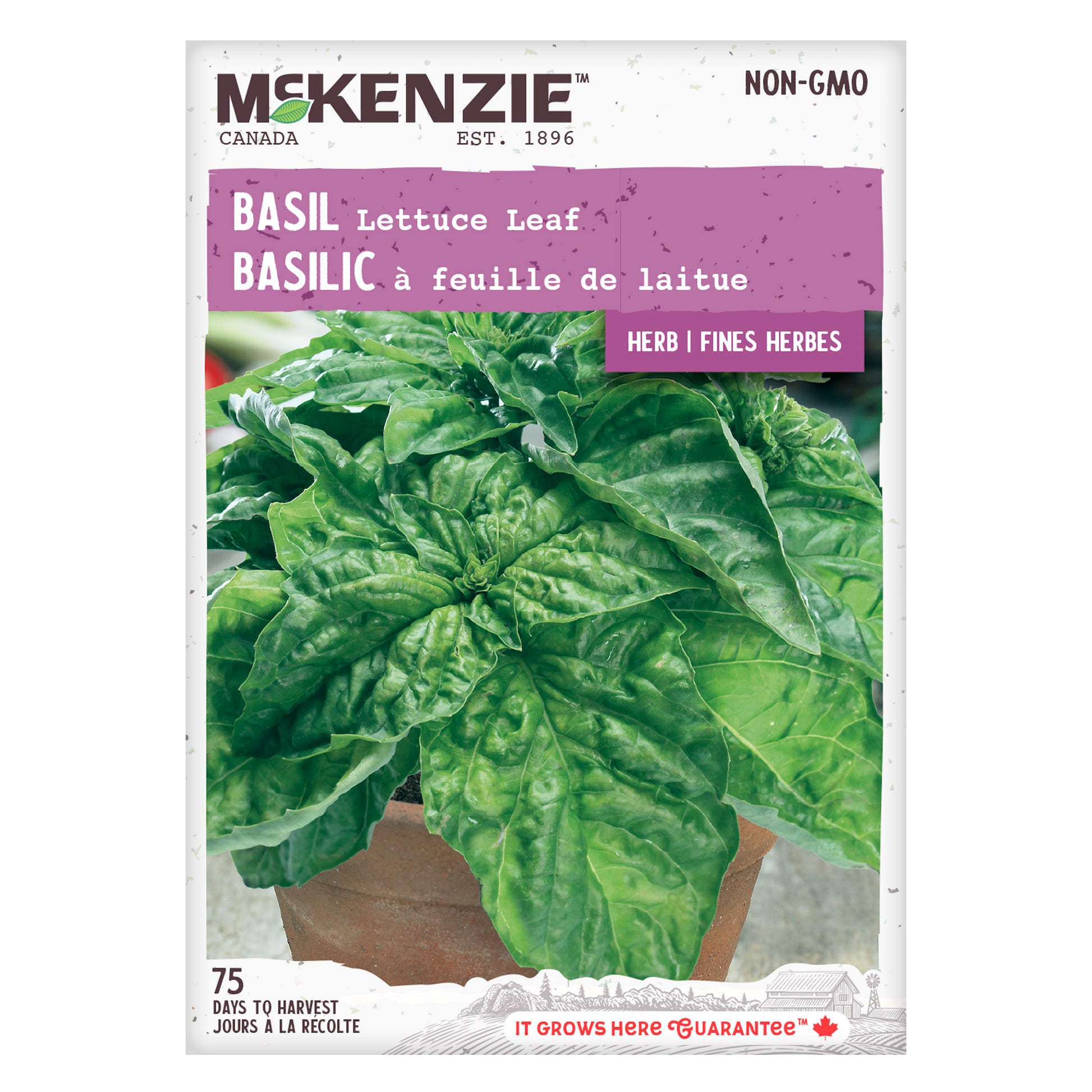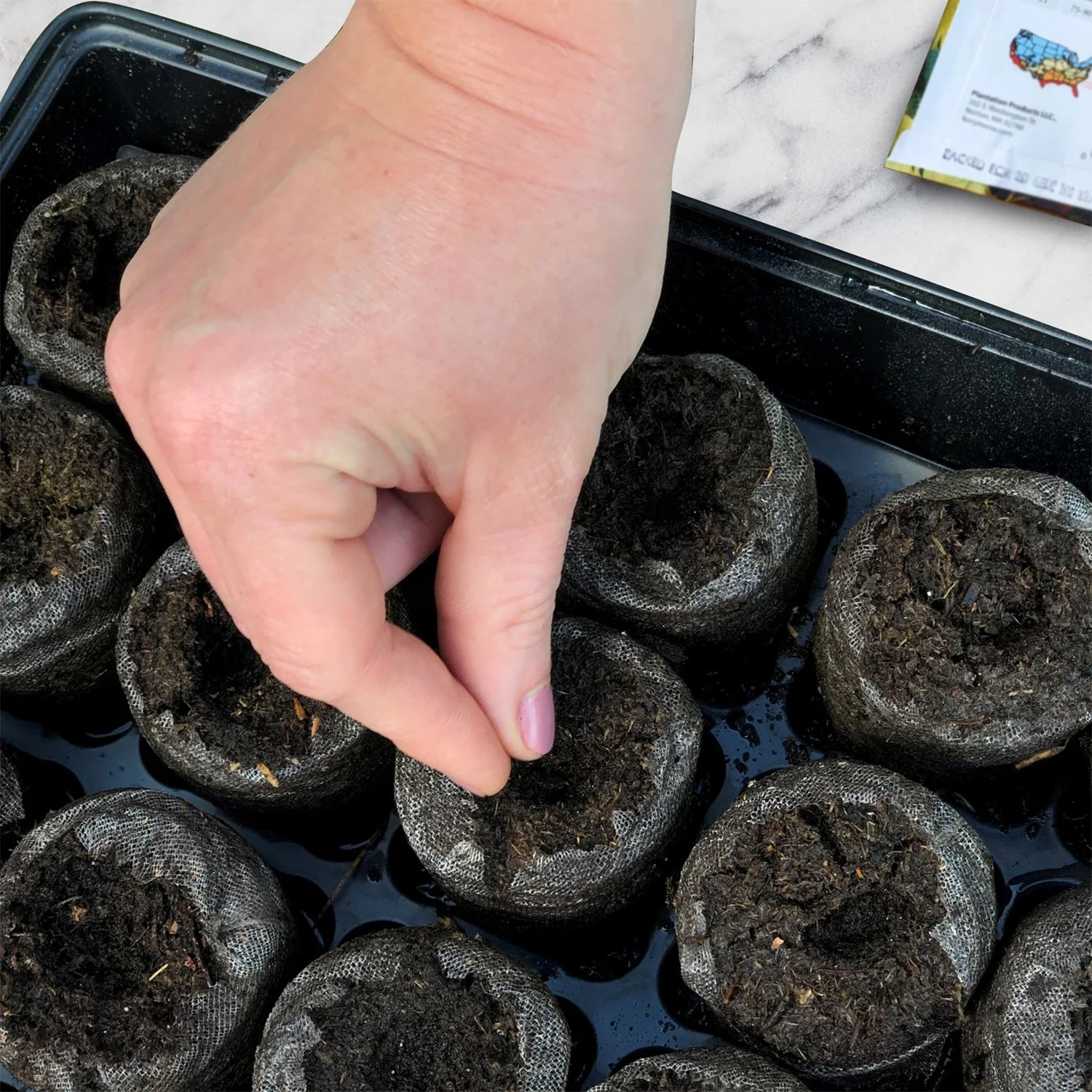Growing Instructions:
Basil seeds can be sown directly into the garden when the soil is warm and all danger of frost is passed. Soil temperature (not air temperature) should be warmer than 21°C (70°F) for seeds to germinate. Planting at a lower temperature will delay germination. Space seeds and plant to the depth indicated below. Press seeds into the soil to ensure good contact and cover with 3 mm (1/8") of soil. After planting, water the seeds with a gentle mist or shower. A hard spray can wash soil away, dislodge seeds and clump them together. It is critical to keep the soil consistently moist, but not soggy during germination. Do not let the soil dry out, as young plants have underdeveloped roots and can quickly dehydrate, particularly in windy conditions. When your seedlings reach a height of a few centimetres (inches) and have developed 2 or 3 pairs of leaves, it is important to thin them out, according to the plant spacing indicated below to provide good air circulation and room to grow.
For an earlier crop, seeds can be started indoors 6-8 weeks before the last frost in your area. Follow the seed depth and spacing guidelines indicated below. Once all danger of frost has passed, seedlings should be hardened off before planting in their growing location. Seedlings should be transplanted according to the plant spacing directions below. Regularly monitor your plants and ensure that the soil remains moist while they establish themselves in their new environment. When your seedlings reach a height of a few centimetres (inches) and have developed 2 or 3 pairs of leaves, it is important to thin them out, according to the plant spacing indicated below to provide good air circulation.
Click here to read more information on planning and planting a garden.
- Planting Depth: 3 mm (1/8")
- Seed Spacing: 1.3 cm (1/2")
- Plant Spacing: 30 cm (12")
-
Instructions for Nutrient Care:
Feed plants SUPERthrive once per week. Mix 1.2 ml (1/4 tsp) per 4L (1 gallon) of water in a watering can and apply solution to the base of the plants.
